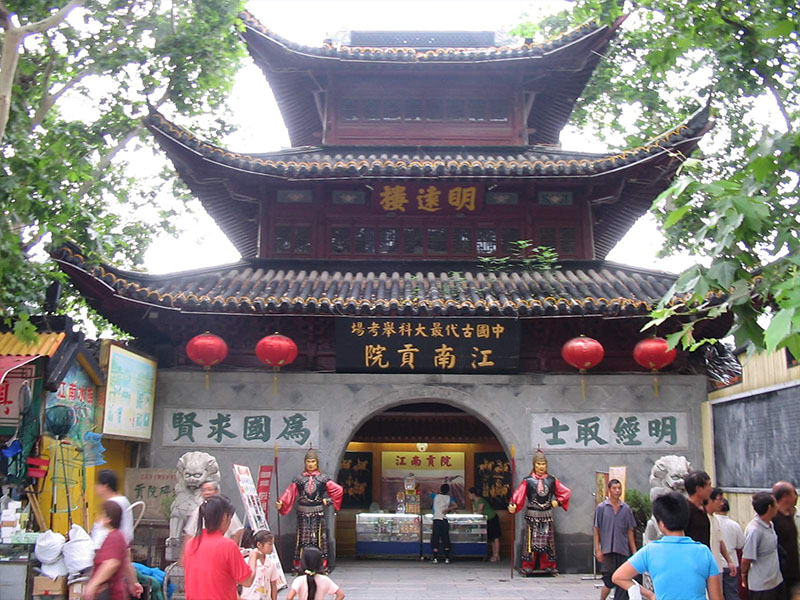Jiangnan Imperial Examination Museum
As one of the biggest imperial examination center in ancient China, it was built in the Southern Song Dynasty. At first, it was a venue for the examination at the county and prefectural levels. In 1368, after Zhu Yuanzhang established the Ming Dynasty and made his capital in Nanjing, it became a venue for the examination at the county and provincial levels. In 1421, when Zhu Di, third emperor of the Ming Dynasty, moved his capital to Beijing, it was taken as the venue for the examination at the county level. Thanks to constant expansion under Guangxu reign of the Qing Dynasty, it became the biggest venue for examination in China with as many as 20,644 examination rooms. In the Qing Dynasty alone, 58 examinees became No. One Scholars through the county-level examination in the south of the Yangtze River area, accounting for over 50% of all No. One Scholars in China at that time. Such celebrities as Tang Bohu, Zheng Banqiao, Wu Jingzi, Wu Chengen, Fang Bao, Lin Zexu, Zeng Guofan, Zuo Zongtang, Li Hongzhang and Chen Duxiu were directly associated with Jiangnan Imperial Examination Center.
Nowadays, it chiefly collects and exhibits cultural relics and historical data related to the imperial examination as well as research on the system of the imperial civil examination in China. So far, it has a batch of precious cultural relics such as 23 well-preserved tablets as key cultural relics under provincial protection, epitomizing the cream of the system of the imperial examination in China. Besides, “Mobile Inspection Tour by No. One Scholars”, “Jumping over the Dragon-Gate to Pay Respect to No. One Scholars”, “Simulated County-Level Examination” and photo-taking for tourists in ancient costumes are periodically carried out here.
Zhonghua Rd, Qinhuai District
RMB 25
8:00-21:00
Bus No.1, 7, 31, 40, 301 or tourist bus Line 2, 4

